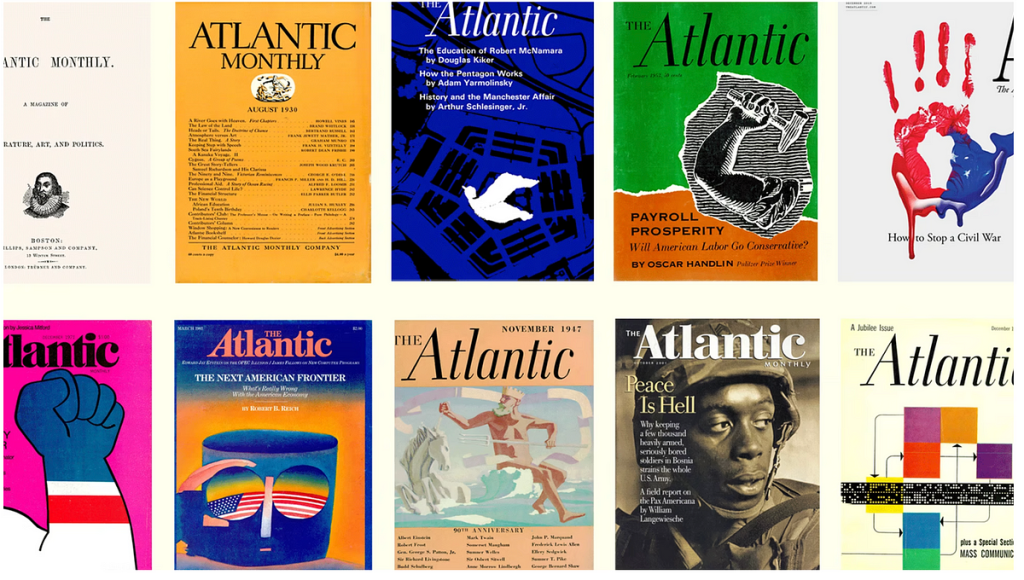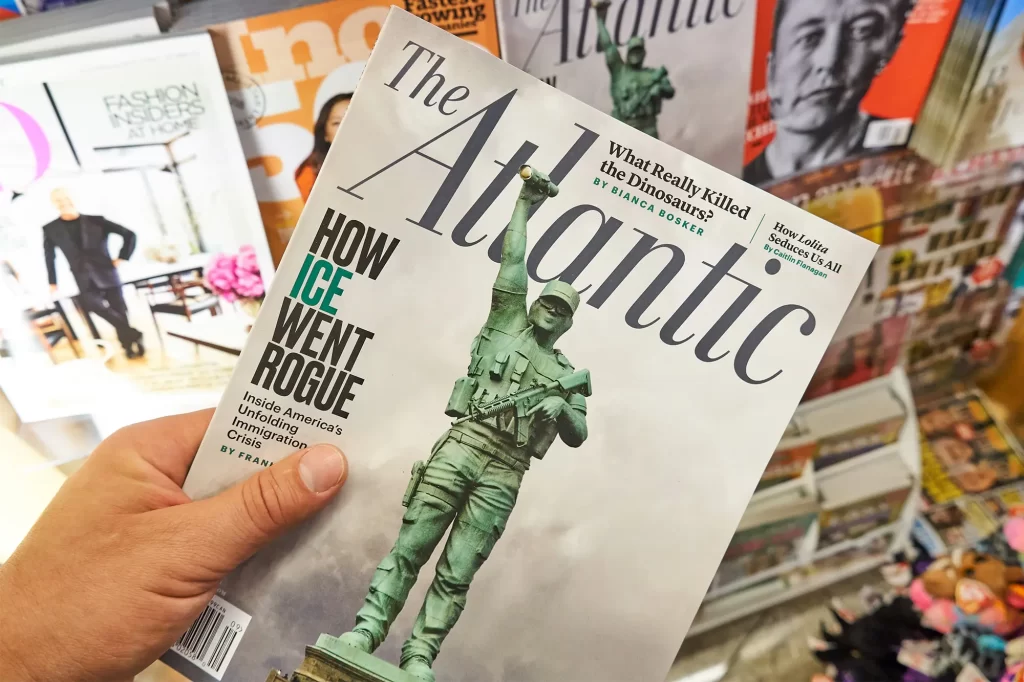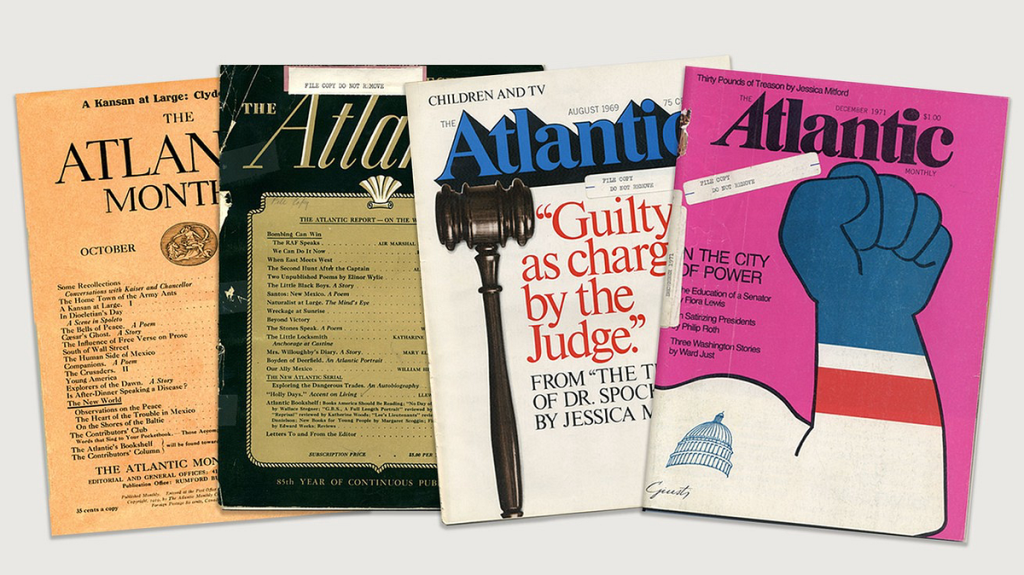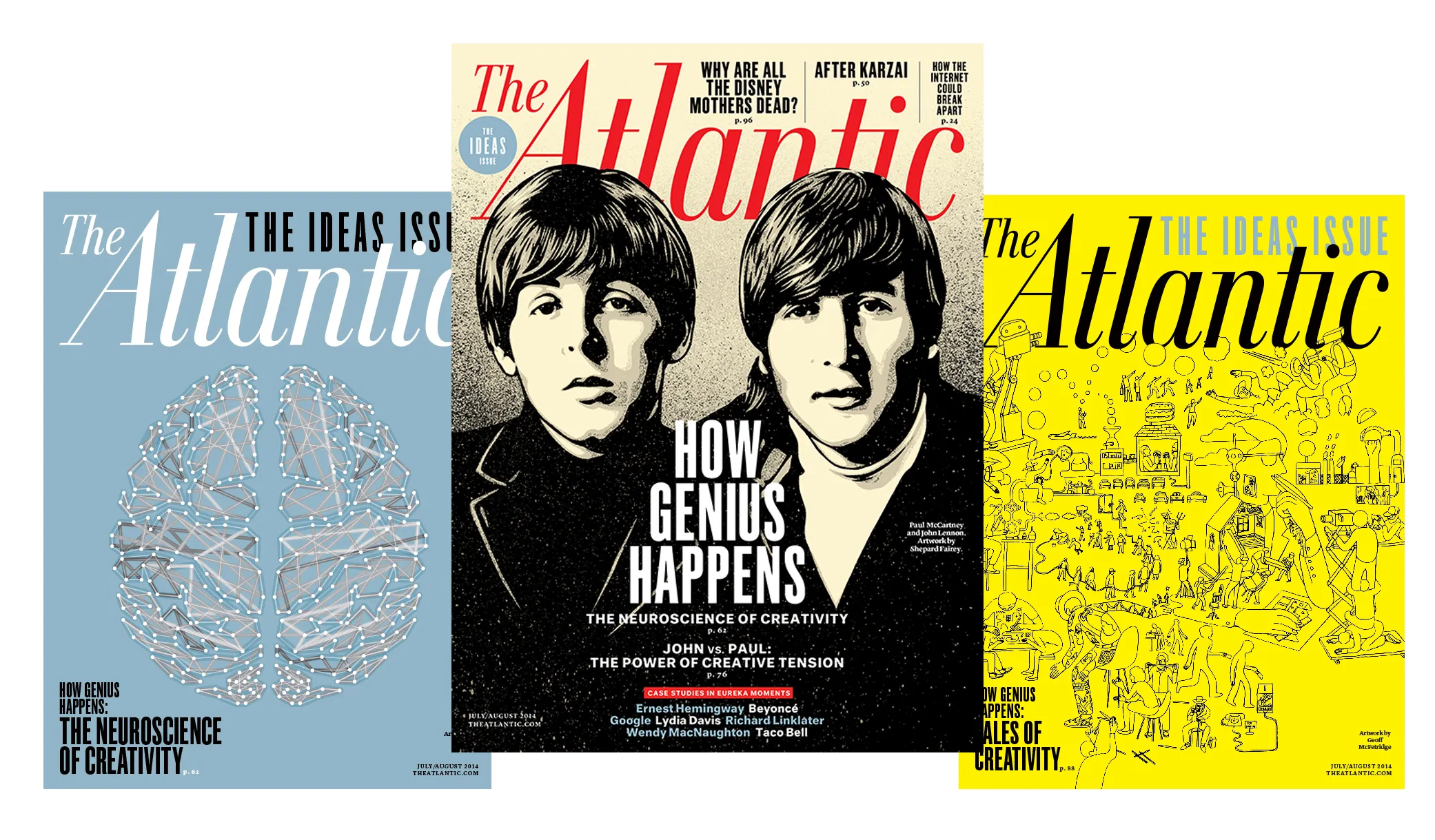Introduction
Atlantic Monthly: The Atlantic Monthly, known today simply as The Atlantic, has been a pillar of American journalism and literature since its inception in 1857. Over the years, its covers have evolved, reflecting changes in design trends, cultural shifts, and the magazine’s own editorial focus. This 2000-word exploration delves into the rich history of Atlantic Monthly magazine covers, examining their transformation from the 19th century to the present day.
The Early Years: 1857-1900
When The Atlantic Monthly was first published in 1857, its covers were relatively modest, reflecting the period’s conservative design aesthetics. The early covers featured intricate engravings and ornate typography, often including the magazine’s full title in a serif font. These covers were more text-heavy, providing detailed information about the contents within. The focus was on conveying seriousness and intellectual rigor, aligning with the magazine’s mission to promote literature, science, and politics.
During this period, illustrations were minimal and typically black-and-white. The few images that did appear were often allegorical or symbolic, intended to represent the intellectual and cultural pursuits of the magazine’s readers. This approach mirrored the broader trends in print media, where text was prioritized over visual elements.
The Turn Of The Century: 1900-1950

As the 20th century dawned, The Atlantic Monthly began to experiment more with its cover design. The influence of the Art Nouveau movement was evident, with covers featuring more stylized and flowing designs. The typography became more elegant and decorative, and there was an increased use of color, though still somewhat restrained compared to later standards.
Illustrations started to play a more prominent role. Artists like John Sloan and Edward Penfield contributed to covers that depicted scenes of everyday life, as well as abstract representations of the magazine’s themes. These covers often blended artistic sophistication with accessibility, aiming to attract a broader readership without sacrificing intellectual depth.
The interwar period saw further innovation, as The Atlantic Monthly embraced the bold, geometric designs of the Art Deco movement. Covers from this era featured sharp lines, vibrant colors, and dynamic compositions. The magazine’s editorial content also began to shift, addressing more contemporary social and political issues, which was reflected in the more modern and striking cover designs.
Mid-Century Modern: 1950-1980
The post-World War II era brought significant changes to The Atlantic Monthly’s cover design. Influenced by the burgeoning fields of graphic design and advertising, the magazine’s covers became more visually engaging and sophisticated. The use of photography became more prevalent, often featuring striking black-and-white portraits or candid shots of notable figures.
During the 1960s and 1970s, The Atlantic Monthly covers began to tackle more provocative and timely topics. The Civil Rights Movement, the Vietnam War, and the counterculture movement were all prominently featured. This era saw a blend of photography and illustration, with covers designed to provoke thought and stimulate discussion. The typography was bold and varied, often using sans-serif fonts that conveyed a sense of urgency and modernity.
One notable trend during this period was the use of minimalist design. Covers often featured a single, powerful image or photograph, accompanied by bold, simple text. This approach allowed the magazine to make a strong visual statement while maintaining an air of sophistication and seriousness.
The Digital Age: 1980-2000
As the 20th century drew to a close, The Atlantic Monthly continued to evolve, adapting to the rapidly changing media landscape. The rise of digital technology and the internet had a profound impact on print media, and The Atlantic was no exception. The magazine’s covers during this period reflected these changes, incorporating more dynamic and experimental designs.
The 1980s and 1990s saw a greater use of computer-generated imagery and digital manipulation. This allowed for more complex and visually stunning covers, often featuring surreal or abstract designs. The typography became even more varied and innovative, with designers experimenting with different fonts, sizes, and placements to create eye-catching compositions.
One significant development during this period was the increased use of thematic covers. Rather than simply highlighting the contents of a particular issue, covers began to explore broader themes and concepts. This approach allowed The Atlantic to engage with its readers on a deeper level, prompting them to think critically about the issues being presented.
The New Millennium: 2000-Present

The 21st century has brought both challenges and opportunities for The Atlantic Monthly, as it navigates the shifting landscape of print and digital media. The magazine’s covers have continued to evolve, reflecting changes in technology, design trends, and cultural priorities.
In the early 2000s, The Atlantic embraced a more streamlined and modern aesthetic. Covers became cleaner and more minimalist, often featuring bold, striking images with minimal text. This approach was designed to stand out on crowded newsstands and attract the attention of busy readers.
As digital media became more dominant, The Atlantic Monthly also began to experiment with interactive and multimedia elements. Digital editions of the magazine featured covers that could incorporate animation, video, and other dynamic elements. This allowed for a more immersive and engaging reader experience, while also showcasing the magazine’s commitment to innovation.
In recent years, The Atlantic Monthly has continued to push the boundaries of cover design. The magazine’s covers have tackled a wide range of contemporary issues, from climate change and political polarization to technology and culture. The use of photography, illustration, and graphic design has remained central, with each cover carefully crafted to convey the essence of the issue it represents.
One notable trend in recent covers is the use of powerful, evocative imagery. The Atlantic has not shied away from addressing difficult and controversial topics, and its covers often feature striking and provocative images that capture the urgency and importance of these issues. This approach has helped the magazine maintain its relevance and influence in an increasingly crowded media landscape.
The Role Of Cover Art In Branding And Identity
The covers of The Atlantic Monthly have played a crucial role in shaping the magazine’s brand and identity. Throughout its history, The Atlantic has positioned itself as a publication that combines intellectual depth with cultural relevance. Its cover designs have been instrumental in conveying this dual focus.
In the early years, the intricate engravings and ornate typography of The Atlantic’s covers signaled a commitment to highbrow literature and serious discourse. This visual approach helped establish the magazine as a trusted source of intellectual content. As the design evolved, the covers began to reflect broader societal changes, mirroring the magazine’s expanding editorial scope.
During the mid-20th century, as The Atlantic Monthly began addressing more contemporary and controversial issues, its covers became a tool for branding. The bold, modern designs of the 1960s and 1970s, for instance, reinforced the magazine’s image as a forward-thinking publication that was unafraid to tackle the pressing issues of the day. The minimalist approach of the late 20th century further solidified The Atlantic’s reputation for sophistication and seriousness.
Iconic Covers And Cultural Impact Of Atlantic Monthly
Several covers of The Atlantic Monthly have become iconic, leaving a lasting impact on both the magazine’s legacy and the broader cultural landscape. These covers often encapsulate significant moments in history or shifts in public consciousness, making them memorable not just for their design but for their cultural resonance.
One such cover is the November 1963 issue, which featured a stark, black-and-white photograph of John F. Kennedy, published shortly after his assassination. The somber image, accompanied by minimal text, captured the nation’s collective grief and remains one of the most poignant covers in the magazine’s history.
Another notable cover is the September 1990 issue, which featured an abstract depiction of the fall of the Berlin Wall. The cover used bold colors and geometric shapes to symbolize the breaking down of barriers, reflecting the optimism and uncertainty of the post-Cold War era. This cover not only marked a historical milestone but also showcased The Atlantic’s ability to distill complex events into powerful visual statements.
In recent years, The Atlantic has continued to produce covers that resonate deeply with contemporary audiences. The July/August 2018 issue, for instance, featured an image of a small child crying at the U.S.-Mexico border, highlighting the human impact of immigration policies. This cover sparked widespread discussion and underscored the magazine’s commitment to addressing urgent social issues.

Conclusion
The covers of The Atlantic Monthly, now The Atlantic, provide a fascinating window into the magazine’s history and evolution. From the conservative, text-heavy designs of the 19th century to the bold, innovative covers of the 21st century, The Atlantic’s covers have consistently reflected the magazine’s commitment to intellectual rigor, cultural engagement, and visual sophistication.
As The Atlantic continues to navigate the challenges and opportunities of the digital age, its covers will undoubtedly continue to evolve. Whether through striking photography, innovative design, or powerful thematic imagery, The Atlantic’s covers will remain a vital part of its identity, capturing the essence of the issues that matter most to its readers.

